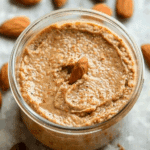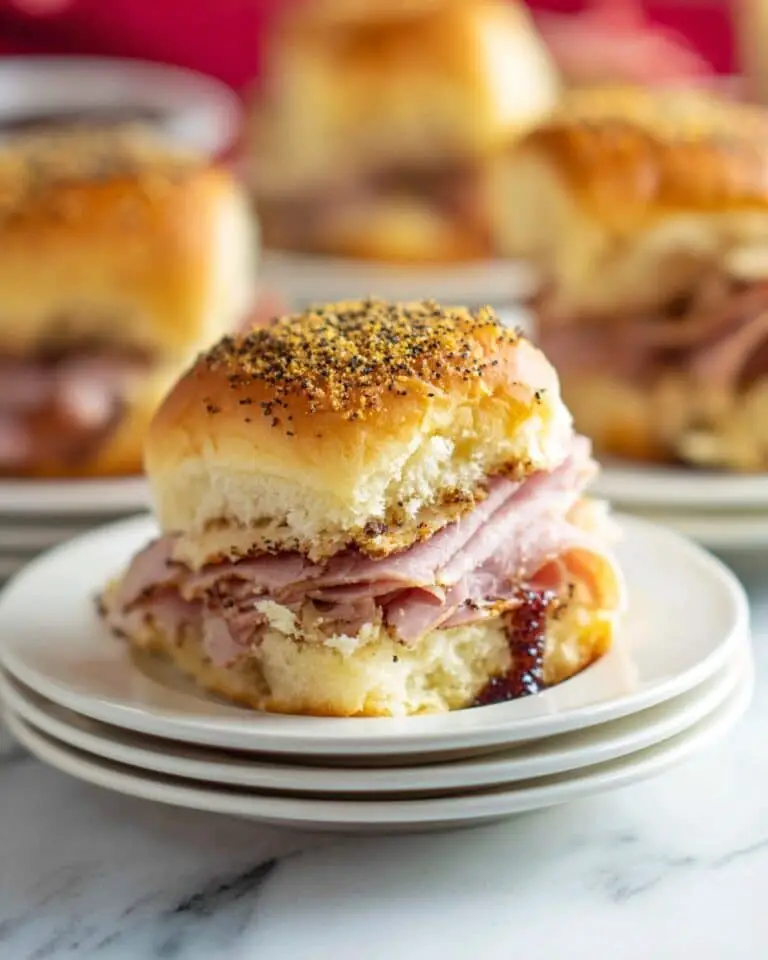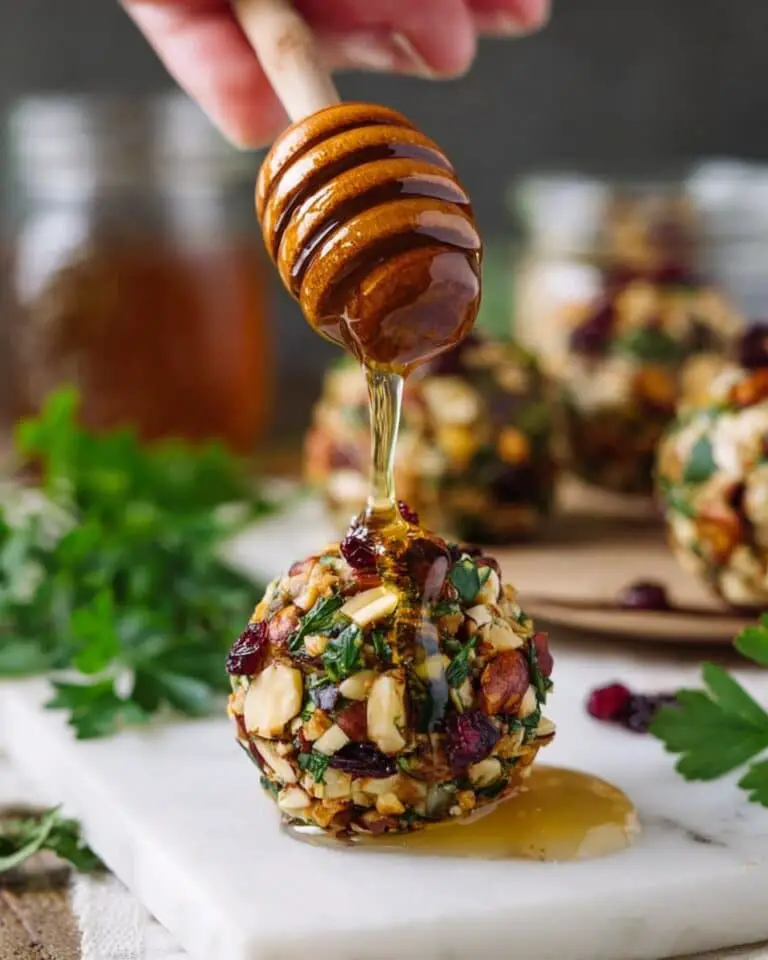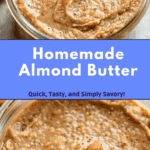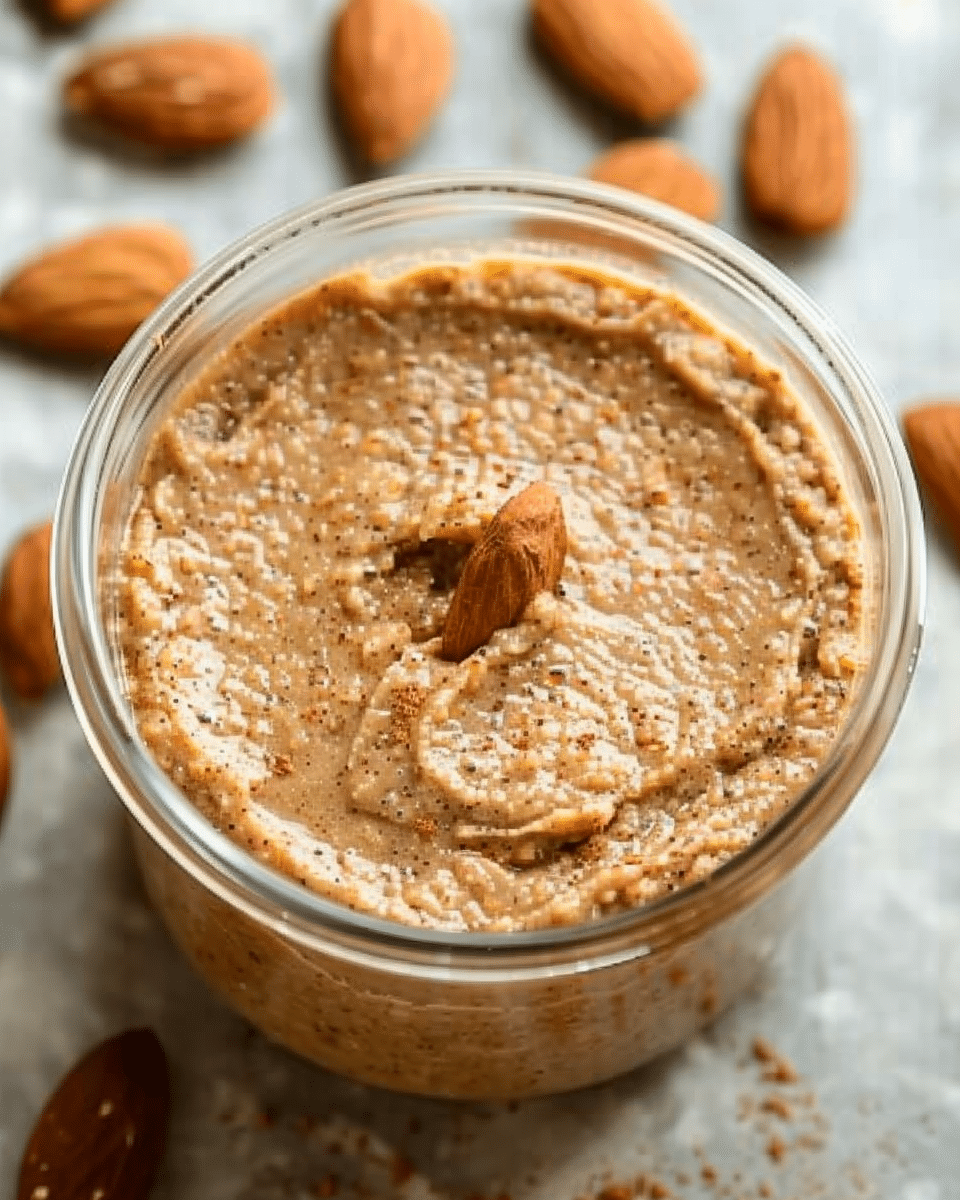
Why You’ll Love This Recipe
Homemade almond butter is not only more affordable than store-bought versions, but it’s also free from any added sugars, oils, or preservatives. You control the flavor and texture, so you can make it as smooth or chunky as you like. The process is quick and straightforward—just one ingredient and a food processor are all you need. Whether you’re looking for a healthy snack or a versatile ingredient for your meals, homemade almond butter is a perfect choice!
Ingredients
(Tip: You’ll find the full list of ingredients and measurements in the recipe card below.)
- 1 cup raw almonds
Directions
- Roast the Almonds (Optional): If you prefer a roasted flavor, preheat your oven to 350°F (175°C). Spread the raw almonds in a single layer on a baking sheet and roast for 10-12 minutes, stirring halfway through. Allow them to cool before making the almond butter.
- Process the Almonds: Place the raw (or roasted) almonds into a food processor. Start blending the almonds on low speed. At first, the almonds will turn into a coarse meal, but continue processing.
- Scrape the Sides: Occasionally stop and scrape the sides of the food processor to ensure even blending.
- Blend Until Smooth: After about 5-10 minutes of blending, the almonds will release their natural oils, and the texture will begin to turn creamy. Continue blending until you reach your desired consistency—smooth or slightly chunky.
- Store the Almond Butter: Transfer the almond butter into an airtight container or jar. Store it in the refrigerator for up to 2-3 weeks.
Servings and Timing
- Servings: Varies (1 cup of almonds makes approximately 1/2 to 3/4 cup of almond butter)
- Prep time: 5-10 minutes
- Cook time: If roasting, add an additional 10-12 minutes
- Total time: 10-20 minutes (depending on whether you roast the almonds)
Variations
- Sweetened Almond Butter: Add a drizzle of honey or maple syrup for a touch of sweetness. You can also add a pinch of cinnamon for extra flavor.
- Flavored Almond Butter: Stir in a bit of vanilla extract, cocoa powder, or sea salt to enhance the flavor.
- Chunky Almond Butter: If you prefer a chunkier texture, process the almonds until the butter is almost smooth, then add a handful of chopped almonds and pulse a few more times.
- Spicy Almond Butter: For a spicy twist, mix in a little chili powder or cayenne pepper.
Storage/Reheating
- Storage: Homemade almond butter should be stored in an airtight container at room temperature for up to 1 week. For longer storage, keep it in the refrigerator for up to 2-3 weeks.
- Reheating: There’s no need to reheat almond butter, but you may need to stir it if the oils separate over time. Simply mix the oil back in for a smooth consistency.
FAQs
1. Do I need to roast the almonds?
Roasting the almonds is optional. Raw almonds will give you a lighter, more subtle flavor, while roasted almonds provide a deeper, richer taste. Choose based on your flavor preference!
2. Can I use a blender instead of a food processor?
A food processor works best for making almond butter due to its larger size and capacity to process the nuts efficiently. However, a high-powered blender can also be used, though it may take a bit longer.
3. Can I add oil to the almond butter to make it smoother?
Almonds release their natural oils as they’re processed, so typically no additional oil is needed. However, if you prefer a creamier consistency, you can add a teaspoon of coconut oil, olive oil, or almond oil during the blending process.
4. How can I make almond butter without a food processor?
If you don’t have a food processor, you can use a powerful blender. It may take more time and patience, and you may need to stop and scrape down the sides more often. Alternatively, you could consider using a nut grinder or a mortar and pestle, though this is much more labor-intensive.
5. Can I make almond butter with salted almonds?
Yes, you can use salted almonds for a savory version of almond butter. However, if you’re making it yourself, you can control the salt level by adding just a pinch of salt to taste.
6. How can I store almond butter?
Store your homemade almond butter in an airtight container, preferably in the refrigerator, to keep it fresh for up to 2-3 weeks.
7. Can I add other nuts to this almond butter?
Yes! You can mix almonds with other nuts, like cashews or hazelnuts, for a nut butter blend. Just use a combination of nuts and follow the same process to blend them.
8. Why is my almond butter too thick?
Almond butter thickens because almonds need time to release their oils. If your almond butter is too thick, try processing for a bit longer, or add a teaspoon of oil to thin it out.
9. How can I make almond butter sweeter?
To make almond butter sweeter, add a small amount of honey, maple syrup, or stevia to taste. You can also add a pinch of cinnamon or vanilla extract for extra flavor.
10. Can I make almond butter in large batches?
Yes, you can scale up the recipe by using more almonds. Just ensure that your food processor can handle the larger batch, or process it in stages to avoid overloading the motor.
Conclusion
Homemade almond butter is an easy, healthy, and customizable recipe that lets you enjoy the rich flavor of almonds without any additives or preservatives. It’s perfect for spreading on toast, adding to smoothies, or simply eating by the spoonful. Plus, with the freedom to customize flavors, you can make it as sweet, savory, or plain as you prefer. Once you try making almond butter at home, you’ll never go back to store-bought versions!
PrintHomemade Almond Butter
Homemade almond butter is a simple, healthy, and customizable alternative to store-bought versions. Made with just one ingredient—raw almonds—this almond butter is packed with healthy fats, protein, and essential vitamins. You can enjoy it on toast, in smoothies, or use it in baking, all while avoiding added sugars, oils, and preservatives. It’s easy to make, and you can adjust the flavor to suit your preferences.
- Prep Time: 5-10 minutes
- Cook Time: 10-12 minutes (if roasting)
- Total Time: 10-20 minutes (depending on roasting)
- Yield: About 1/2 to 3/4 cup almond butter from 1 cup of raw almonds
- Category: Snack, Condiment
- Method: Blending/Processing
- Cuisine: Healthy, DIY
- Diet: Vegan
Ingredients
1 cup raw almonds
Instructions
-
Roast the Almonds (Optional): Preheat your oven to 350°F (175°C). Spread raw almonds on a baking sheet in a single layer and roast for 10-12 minutes, stirring halfway through. Let them cool before making the almond butter.
-
Process the Almonds: Place the raw (or roasted) almonds into a food processor. Start blending on low speed. The almonds will first turn into a coarse meal. Keep processing until the almonds release their natural oils and the texture becomes smooth.
-
Scrape the Sides: Occasionally stop and scrape the sides of the food processor for even blending.
-
Blend Until Smooth: After about 5-10 minutes, the almond butter should be smooth. Continue blending until you achieve your desired consistency—smooth or chunky.
-
Store the Almond Butter: Transfer the almond butter into an airtight container. Store it in the refrigerator for up to 2-3 weeks.
Notes
Storage: Store almond butter in an airtight container at room temperature for 1 week or in the refrigerator for 2-3 weeks. If the oils separate, simply stir to combine.
Sweetened Almond Butter: For sweetness, add a drizzle of honey or maple syrup, or sprinkle in some cinnamon.
Chunky Almond Butter: For a chunkier version, blend the almonds until almost smooth, then pulse in a few chopped almonds.
